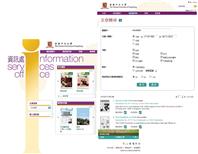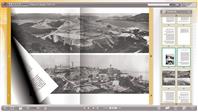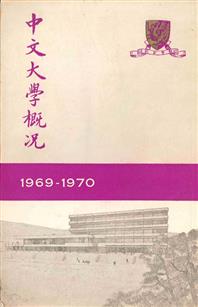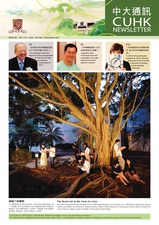The Information Serivces Office (ISO) has a storeroom on campus housing historical gems of the University. These are old manuscripts, old photographs and past issues of University publications which came out over the last 50 years. Every word and image tells us a little about CUHK and together they tell the history of the University. For decades, these gems have been waiting for a suitable time to come out into the open.
A Golden Opportunity
Finally, in 2010, an opportunity presented itself—preparations for the celebration of the 50th anniversary of CUHK. ‘The University is celebrating its Golden Jubilee next year. People will take a renewed interest in its past, and demand for texts and photos will increase, so, I applied for funding from the University two years ago, and began to digitize the ISO’s print archive,’ said Mr. Tommy Cho, Director of Information Services.
In the past 10 years or so, the ISO’s publications have appeared in both print and electronic formats. As information technology advances, old systems needs to be modified and revamped, and the layouts of different e-publications have to be standardized for ease of search. Mr. Cho said the ISO has so far digitized six titles from the first issue, and besides the PDF format, they have also provided e-books and a search function. Bits and pieces of the University’s buried past have now received a new lease on life.
University Publications Digitized and Searchable
Prof. Michael Hui, Pro-Vice-Chancellor of CUHK, who supported the digitization project, said, ‘The publications of ISO are high in production value and over the years have formed an institutional repository of important University events and happenings. It is time that these chronicles are digitized and made available at one’s fingertips.’ The digital archive was completed this summer, and Mr. Cho said user response has been positive. ‘During the trial period, colleagues from other departments/units told us that they found the digital archive useful. This is truly good news to our staff who put a lot of effort into it.’
Mr. Li King-kwan George, research assistant, University Gallery, were among the first few who browsed the archive shortly after its establishment. He said, ‘The search function of the ISO’s main page allows me to retrieve the desired information very quickly. It saves my time and now I don’t need to check publications page by page.’
Retrieving Lost or Misplaced Copies
Some of the University’s old publications were lost due to the absence of a comprehensive filing system, a suitable place for long-term storage and several relocations. Ms. Bonnie Ko, senior web manager, said ISO staff had combed the University and government departments for these missing copies by making enquiries to individual units. ‘It is important to have all the copies. As the ISO is the official information provider of the University, we must present the e-copies in full sets and make sure the contents are there. That is our mission of setting up the archive.’ One of the best examples is the recovery of the Chinese version of the CUHK Calendar (1969–1970) from the University Secretariat, which was the only copy available. Thanks to the digitization project, many valuable publications have been preserved and are now available for the benefit of CUHK members and the public.
A User-friendly Interface
The ISO’s e-books are easy to read because of their user-friendly designs. The layout is neat, the images are clear, and fonts and images can be enlarged or shrunk at the press of a button. They also come with a table of contents, pagination, content thumbnails, and other one-click functions like printing, searching, sharing, and bookmarks linked to social websites. If the publication is bilingual, users can click their language of choice on the top bar. Ms. Ko said, ‘The design of the user interface is simple to understand and very easy to use. The tedious scanning, optical character recognition (OCR) application, proofreading, formatting and uploading work were done by a small team, and we’ve encountered numerous difficulties during the process of digitization. But luckily our staff’s ability to innovate meant we always managed to come up with solutions. The experience has been invaluable and the ISO is happy to share it with departments/units that want to pursue similar projects. We can tell them how we chose the appropriate content management platform, applied OCR software and PDF files editing software.’
Future Development
Following the completion of the digital archive, the ISO is planning to further enhance online contents to include non-recurrent publications. For ease of search, a more detailed method of categorizing online contents will be explored. The ISO is also going to make the archive more convenient for mobile devices such as smart phones and tablet computers. Mr. Cho concluded, ‘The digital archive is not going to remain stagnant. Whenever an ISO publication is released, it will be automatically and instantaneously archived, and this database will become a reliable and easy-to-manage system for the entire University.’
The ISO digital archive is indeed a treasure trove of life, events and sentiments related to the Chinese University. And we and our successors all hold the key to it. 




































































































































































Social Bookmarks